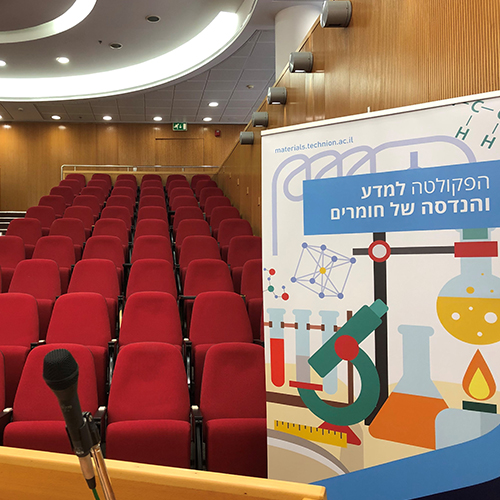
Ms. Noy Mizrahi - M.Sc. Candidate
16/02/2025
David Wang Auditorium, 3rd floor Dalia Meidan Bldg.
14:30
The unique electronic properties of lead-halide perovskites (LHPs) make them excellent candidates for various optoelectronic applications, particularly in solar cells. This study focuses on a comparative analysis of four primary perovskites: MAPbI₃, FAPbI₃, MAPbBr₃, and FAPbBr₃. Using density functional theory (DFT) and non-equilibrium Green’s function (NEGF) calculations, the research investigates the impact of biaxial strain (simulating deposition on substrates like SnO₂) on the lead-halide bond length, band gap, and resistivity. Strain and its effect on bond length were among the most influencing parameters on the perovskites’ electronic properties. Among iodine perovskites, FAPbI₃ showed a smaller band gap, higher transmission, and lower resistivity, and it is the superior material at zero strain. However, overall, MAPbBr₃ is the most stable and conductive material under various strain conditions. These findings provide deeper insight into optimizing the performance of perovskite-based solar cells and other LHP applications.


